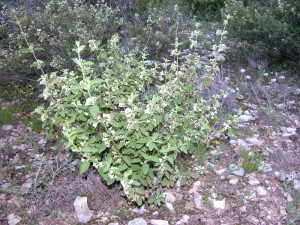July 2015 Monthly Feature
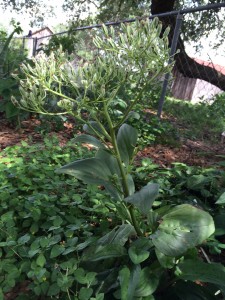
Plantain at The Herb Cottage- Not a native!
We celebrated July 4th this month and that celebration of our nation caused me to think about what herbs are truly native to the United States. Join me in this discussion of common herbs, culinary and medicinal. Which ones are and which ones are not natives may surprise you.
America is huge. It’s the second largest country in the world, only succeeded by Russia. (Some say Canada is larger. The square mileage of Canada and the U.S. is very close.) Texas, where I live, covers such a large area it contains as many as 5 distinct climate and geographical zones.
Our whole country, of course, contains even more- from the frozen reaches of the Alaskan wilderness to the swamps of South Florida, the plains of the midwest and the rocky temperate coastline of the western states. What a glory of plant and animal life is contained within our shores!
Which herb are actually native to our land?
Are there culinary ones that are in common usage?
We know many of the common herbs we use in cooking come from the Mediterranean countries. Many of them are well established and are very at home in parts of the US. Coastal California is fortunate to have a rather Mediterranean-like climate where herbs such as thyme, oregano, rosemary, marjoram and lavender thrive and can even become part of the landscape. Other parts of the country grow such herbs as annuals or containerized perennials. But which herbs do we use in our cuisine are native to the US?
Epazote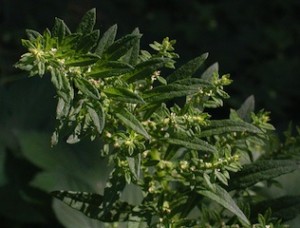
One that comes to my mind is Epazote because it grows wild in south Texas areas, including my herb bed, and is used in southwest style cooking. When I looked it up, I found out it is not actually a native, but was introduced from South Mexico, Central and South America. It is much used in Southwestern cuisine as well as having medicinal properties.
Many ancient cultures in Mexico, Central and South America have used various forms of Epazote as a vermifuge- to expel intestinal worms. A decoction or strong tea has successfully been used topically to cure ringworm.
The amount of the herb used in cooking is so much less than the amount used for medicinal purposes, it is quite safe to use in the kitchen. Its most common use is in bean pots to (supposedly) keep the beans from causing flatulence. It’s definitely an acquired taste to be used sparingly. It is added in the last 15 minutes or so of cooking so it doesn’t turn bitter.
Epazote is in the Chenopodium or Goose Foot family. It will grow in shade or sun. If shade grown with ample water, the leaves are larger and the plant does not bolt as quickly as when it’s grown in more sun with less water. All plants in the Goose Foot family make hundreds of seeds and Epazote is no exception. It reseeds readily and has escaped cultivation all over the southern parts of Texas and norther Mexico.
Redbrush Lippia
Although the common oregano that we use, Oregano vulgare, is not native to the U.S., there is an oregano substitute that is native to the US. Known as Redbrush Lippia or Mexican Oregano, Lippia graveolens is native to the rocky hills and plains of the Rio Grand area and the Trans Pecos, west to New Mexico and California and south into Mexico and Nicaragua.
According to the TAMU, Aggie Horticulture site: “Redbrush lippia is a slender aromatic shrub or small tree, whose pubescent (felty) branches bear rounded to obtuse, bluntly serrated leaves. Fragrant flowers are yellowish or white with a yellow eye and occur throughout the year, especially after rains. Red-brush is used as a tonic, stimulant, expectorant and condiment in Central America. When crushed the leaves smell of oregano. Graveolens means “strong smelling”.
BENEFIT
Use Ornamental: Showy, Aromatic, Blooms ornamental
Use Wildlife: Nectar-butterflies, Nectar-bees, Nectar-insects, Seeds-granivorous birds
Conspicuous Flowers: yes
Lippia graveolens is used to flavor food and for a mild, medicinal tea in many parts of Mexico and Central and South America. The tea is said to help bring on late menstruation and to treat respiratory infections. The dry or fresh leaves are used to flavor many dishes including beans, corn mush, and other native foods. It can be used in place of the common oregano we’re more used to in any dish calling for oregano.
![]()
Blue Shrub Sage
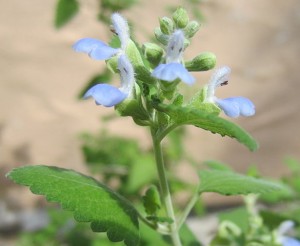
Blue Shrub Sage
Salvia ballotiflora, native to the gravely, limestone hills of Texas, has a wonderful sage taste and aroma. Aside from being very drought tolerant, blooming with blue flowers, usually after a rain, this sage is used as a culinary seasoning for meats and other foods, just like Salvia officinalis, the common culinary sage, which is not native to the U.S.
BENEFIT
Use Ornamental: Aromatic, showy accent shrub.
Use Wildlife: Nectar-bees, Nectar-insects, Cover, Fruit-rodents
Use Food: Reportedly used for flavoring meats and other foods.
Conspicuous Flowers: yes
Fragrant Flowers: yes
Fragrant Foliage: yes
Attracts: Butterflies , Hummingbirds
Nectar Source: yes
![]()
There are many types of food plants native to the U.S., and a wealth of native American herbs used for medicinal purposes. Some are or have been harvested to dangerously low levels in nature and are now being cultivated to supply the commercial needs.
One is a common herb used by many, many people: Echinacea or Cone Flower.
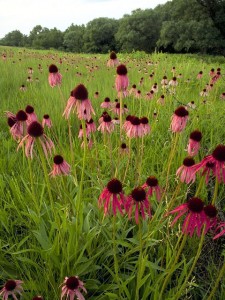
Echinacea purpurea
Native to the prairies of the midwest, Echinacea purpurea is the most common variety used to strengthen the immune system and help to ward off colds, particularly. Echinacea may be the most common herb used by Americans today. It is being farmed for production, which should take the pressure off the wild plants.
Mullein, Verbascum thapsis, or Great Mullein
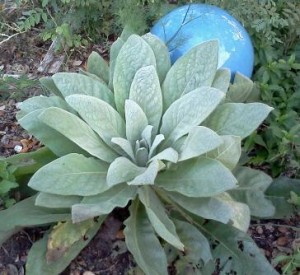
Mullein at The Herb Cottage
is seen throughout the midwestern prairie states and is thought to be an American native. It is not, however, a native American plant. It was introduced in the US, probably by the first settlers on the East Coast and has spread and become in some areas invasive. I like it because of the large size and character of the plant. It’s an outstanding garden ornament, and can be controlled by cutting the flower stalk before the seeds ripen and burst off the stem and reseed everywhere.
The herb has many medicinal and other uses and has been known as Candlewick Plant, due to the down on the leaves and stems making an excellent tinder when dry. Dried, twisted leaves and stems of Mullein were used as lamp wicks before the introduction of cotton. Other common names include Adam’s Flannel, Beggar’s Blanket, Flannel Mullein, Flannel Plant, Hag’s Taper, Jupiter’s Staff, Molene, Velvet Dock, Velvet Plant, and Woolly Mullein.
Mullein has been used in the treatment of consumption, bronchitis and other respiratory ailments as well as a hair dye as early as the Roman times. An infusion of the flowers was used by the Roman women to dye their hair a golden color. Lyte tells us, ‘the golden floures of Mulleyn stiped in lye, causeth the heare to war yellow, being washed therewithall,’ and according to another old authority, Alexander Trallianus, the ashes of the plant made into a soap will restore hair which has become grey to its original colour.
![]()
There are many, many other useful native American plants to explore such as passionflower, yarrow, chickweed, plantain and violets, to name a few.
We have a rich history of herbal usage in our country be it culinary herbs for our food, medicinal herbs to help keep us healthy and cure our ills, or herbs for cosmetic, household and ritualistic purposes. We have the opportunity to learn from each other and from all the influences that make up America.
Let’s Celebrate Herbs!
QUOTE FOR THE MONTH
There is a crack in everything. That’s how the light gets in. -Leonard Cohen, musician (1934- )

